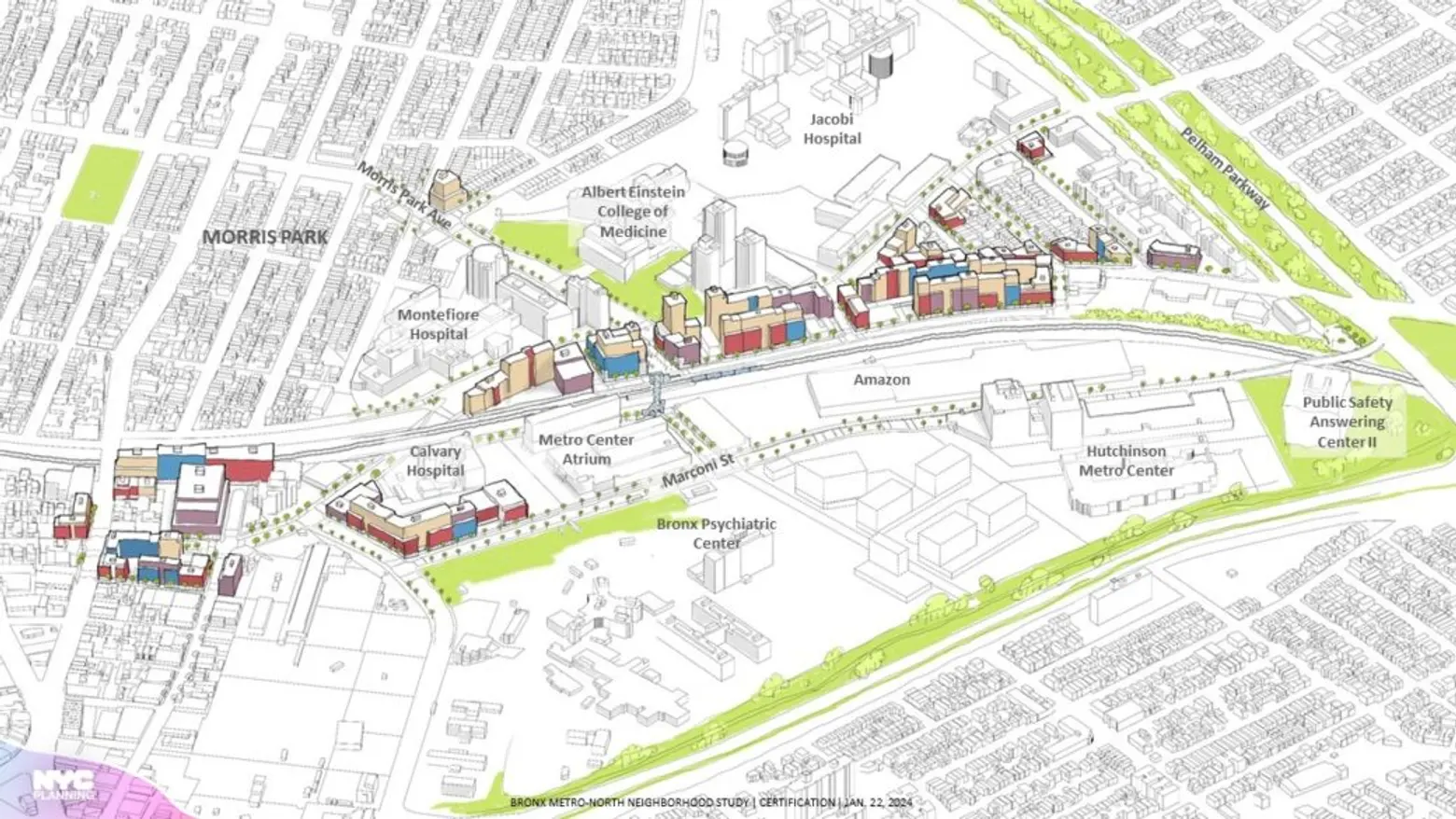Five Neighborhoods Facing the Biggest Changes in 2025


With the City of Yes Plan for Housing Opportunity approved, New York City is set to undergo some of its most significant zoning changes in decades. Some rezonings are sweeping, others more targeted, but all will reshape how New Yorkers live, work, and move through the city.
CivicReset's goal isn't just to critique or cheerlead every policy. We aim to cut through the noise, highlight where progress is real, and point out where risks remain. We believe in adding housing and building stronger communities, but we also believe in accountability: affordability that matches incomes, infrastructure that keeps up with density, and safeguards for culture, equity, and environment.
We haven't posted in a while, but going forward we'll be more consistent — posting at least once a week to keep our fellow New Yorkers informed and engaged.
Here are the five neighborhoods we believe will see the most change in 2025:
1. Midtown South
If you've been following us on our social media, you have seen us discuss the new Midtown South mixed-use plan. It has allowed the rezoning of 42 blocks, between W 23rd–40th St and Fifth–Ninth Aves, which is estimated to build ~9,700 homes (including 2,800 permanently affordable units). This kind of change is exactly the type that CivicReset and City of Yes have called for: more affordable housing in a desirable Manhattan neighborhood.
We have certainly had a positive stance on the development, but now that we have space to get into the details, it is necessary to discuss the threat to the Garment District. Although the plan features ~$488 million in community/infrastructure investments, a busway on 34th St, expanded bike/ped networks, and accessible transit upgrades, it poses a significant risk to the Garment District.
The Garment District remains one of the city's last strongholds for small fashion manufacturers, and without stronger protections, rezoning could accelerate their displacement. The Midtown South plan represents the kind of bold housing reform CivicReset supports — but it also highlights how, without safeguards, zoning changes can trade one vital part of the city's fabric for another.
2. Long Island City (Queens)
LIC is another area that we've recently covered. From 2001 to 2025, rapid changes were made to LIC – sky-rise buildings and soaring rents have completely transformed the feel of the neighborhood. We have complained about the lack of community planning that has gone into these efforts, but the unchecked development efforts are ongoing.
We strongly advocate for inclusionary zoning: parallel investments in schools, businesses, and parks. But LIC has become the opposite, focusing on a seemingly endless number of luxury rental developments. In 2024, 1,859 new rental units were added to Long Island City, and 4,569 more are underway. We are large advocates for higher-density zoning and new construction, but it is essential that it is done right.
Out of these units, six luxury buildings at Queens Plaza are expected to deliver 1,412 new luxury units by 2026. Additionally, out of the 1,859 units completed in 2024, 1,386 of them are from two large projects in Hunter's Point South, which although not overtly luxury, are likely still unaffordable for many residents.
With this rapid burst of development, LIC schools are consequently bursting. Community School District 30 (which includes LIC) has utilization rates over 100% at several elementary and middle schools, meaning children are learning in overcrowded classrooms or temporary trailers (QNS). In turn, Queens Borough President Donovan Richards noted that any rezoning approval should come with new school construction commitments, since LIC has been the fastest-growing residential neighborhood in the city for nearly a decade.
The area has also experienced wastewater overflow issues, and without upgrades, additional density risks worsening flooding and sanitation problems. This is a classic example of developers being driven by a monetary incentive only. Precisely why we are so adamant on a core principle: rezoning must be tied to infrastructure readiness.
3. Atlantic Avenue Corridor – Bed-Stuy & Crown Heights (Brooklyn)
In May of 2025, a mixed-use rezoning plan designed to bring 4,600 homes and 2,100 new jobs to Central Brooklyn through the rezoning of the Atlantic Avenue Corridor was approved.The plan is supported by a $235 million public investment and is intended to replace outdated industrial zoning with mixed-use developments, featuring mid- to high-rise residential buildings, ground-floor retail, and community facilities.
It also includes $135 million in street and infrastructure upgrades, such as wider sidewalks, protected bike lanes, and redesigned intersections, alongside $100 million earmarked for affordable housing and workforce development. About 1,900 of the 4,600 planned units are designated as permanently affordable, making this rezoning one of the city's more equity-focused initiatives.
The Atlantic Ave rezoning plan targets a historically underbuilt and underfunded area, providing it with the resources needed to drastically improve in quality with a high share of affordable units (1,900 out of 4,600) and public realm upgrades. This is a prime example of what a good rezoning initiative looks like. But at the same time, it's important that the city delivers on its commitments so the benefits aren't just promises on paper.
4. Morris Park / Van Nest / Parkchester (East Bronx)
The Penn Station Access Project is an ongoing development aimed at reducing commute times between Manhattan and the Bronx through the implementation of Metro North Lines in Penn Station. As part of this project, four new accessible stations are being built at Hunts Point, Morris Park, Co-op City, and Parkchester/Van Nest.
This plan also came with a massive rezoning effort which was approved in August of 2024. About 246 blocks across the East Bronx are going to undergo a substantial rezoning process, which plans to bring 7,000 new housing units. Out of these 7,000 units, 1,700 are permanently affordable units, and the rezoning comes with $500M in infrastructure commitments.
46 of these rezoned blocks are concentrated around the Parkchester/Van Nest and Morris Park stations, which are expected to absorb a significant share of the total housing. Community Board 11 (which covers Morris Park & Van Nest) raised concerns about preserving low-rise residential blocks, and the final plan scaled back heights in some portions, so their housing numbers will be a bit lower than early drafts.
But either way, this is a significant moment for New York City – it shows that real zoning efforts are finally in the spotlight. After many decades of struggle, New Yorkers are finally realizing that something needs to be done about the housing crisis. This is how rezoning should be done – paired with transit, planned infrastructure, and community review.
5. Port Morris (South Bronx)
Port Morris, long an industrial hub of warehouses and trucking depots, is entering a new chapter. Rezoning efforts and the Mott Haven–Port Morris Waterfront Plan envision opening long-inaccessible stretches of the Harlem River, converting underutilized industrial sites into mixed-use housing, and delivering long-promised green space.
This is a neighborhood with urgent environmental needs: the South Bronx has some of the highest asthma rates in the nation, driven by decades of pollution and truck traffic. Redevelopment here could finally deliver cleaner air, safer streets, and public access to the waterfront.
But the risks are real. Luxury towers have already started rising, pricing out artists and working-class residents. Without safeguards, Port Morris could follow the path of Long Island City — transformation without inclusion.
For CivicReset, Port Morris is a case study in environmental justice rezoning: the city has a chance to deliver affordable housing, health improvements, and community benefits — but it must resist the pull of pure luxury development. We plan to do everything we can to spread awareness and encourage policies that prevent this from happening.
Conclusion
These five neighborhoods — Midtown South, Long Island City, Atlantic Avenue, Morris Park/Van Nest/Parkchester, and Port Morris — are on the frontlines of New York City's rezoning era. Together, they reveal both the potential and the pitfalls of the City of Yes and other zoning reforms.
At CivicReset, our role is to shine light on these changes. We support bold efforts to add housing, but we demand accountability: affordability that matches neighborhood incomes, infrastructure that scales with density, and protections against displacement.
Zoning is never neutral. Done well, it can expand opportunity. Done poorly, it deepens inequality. CivicReset exists to ensure that in New York City, rezoning is done right.